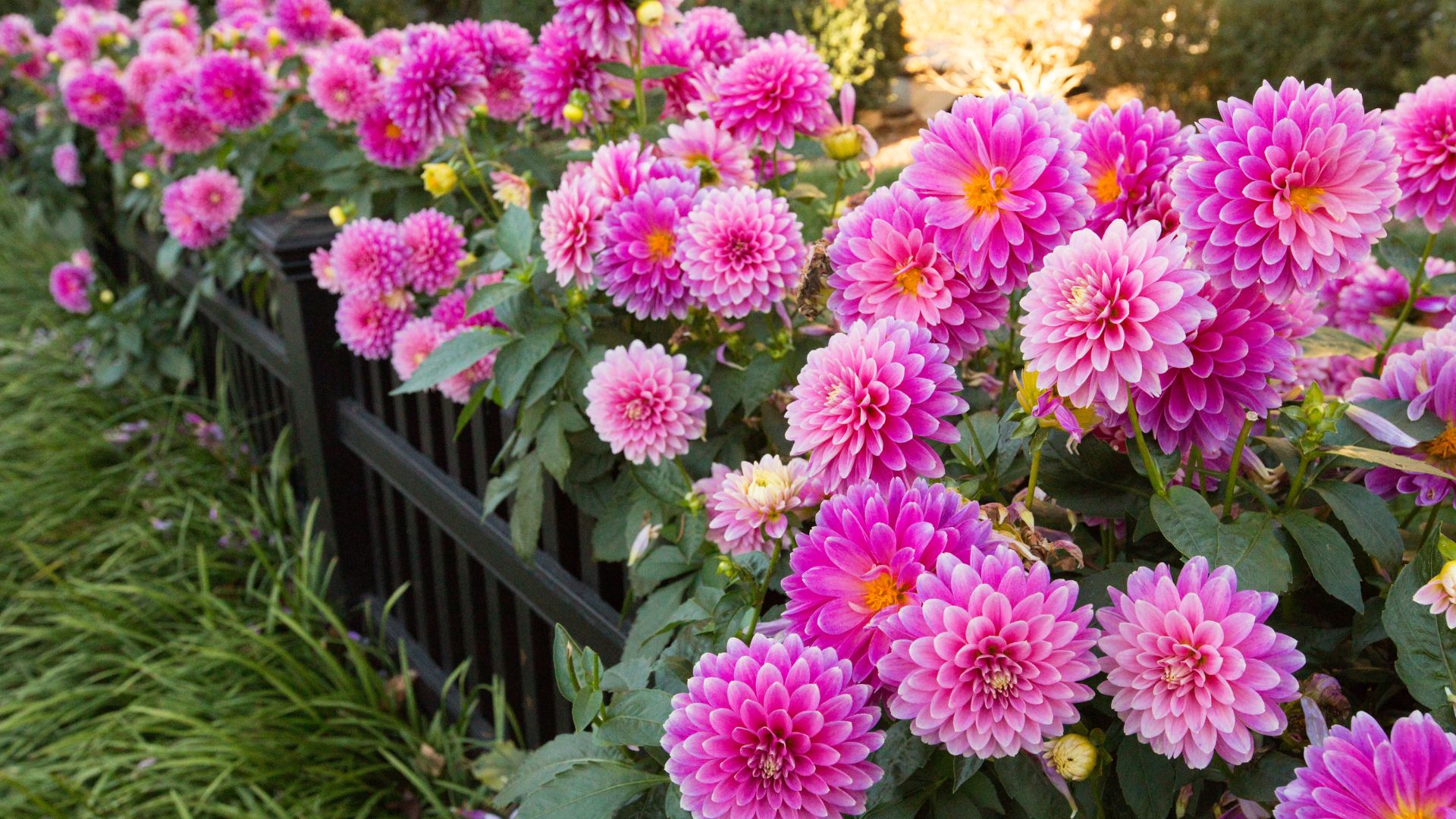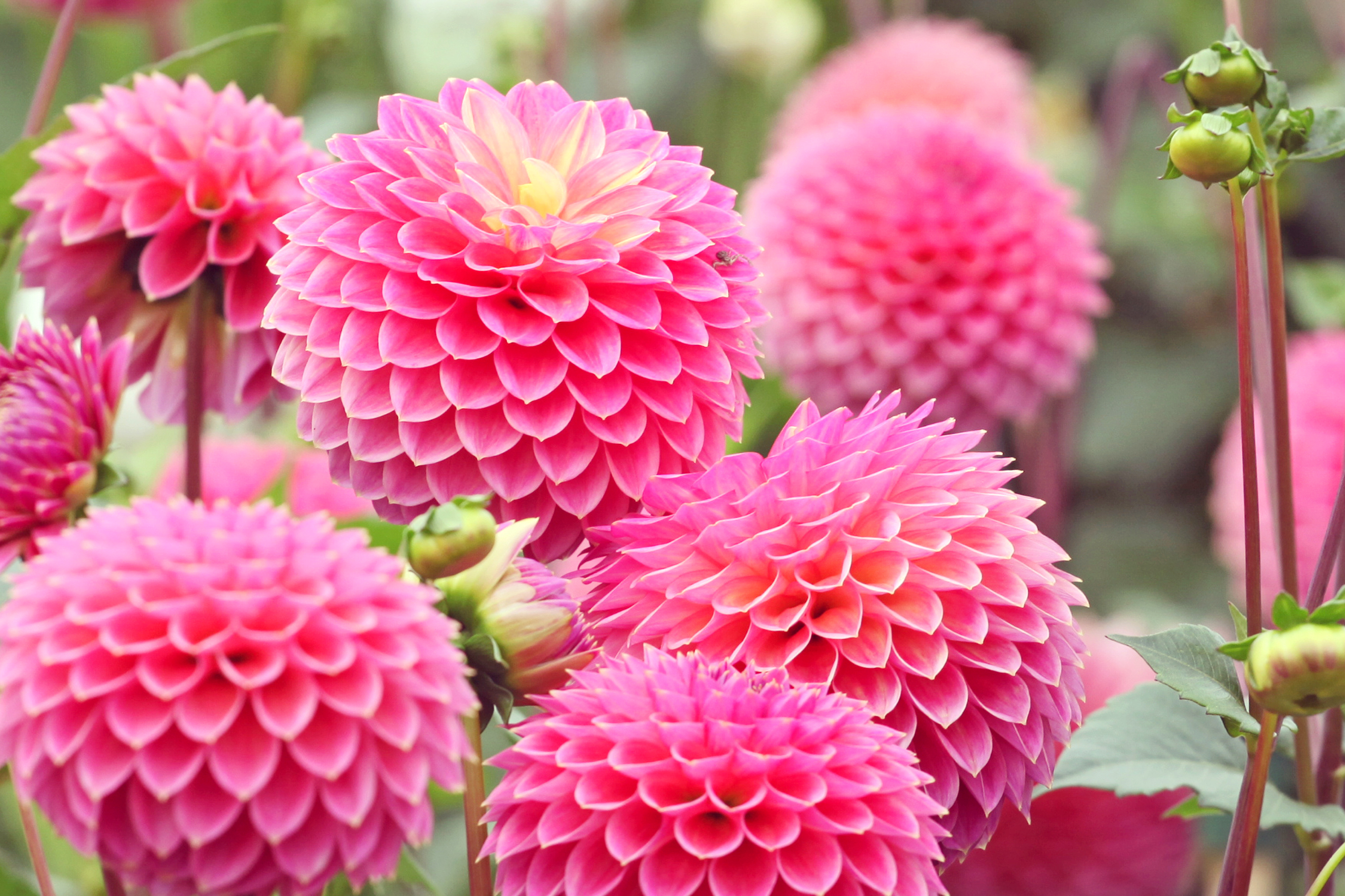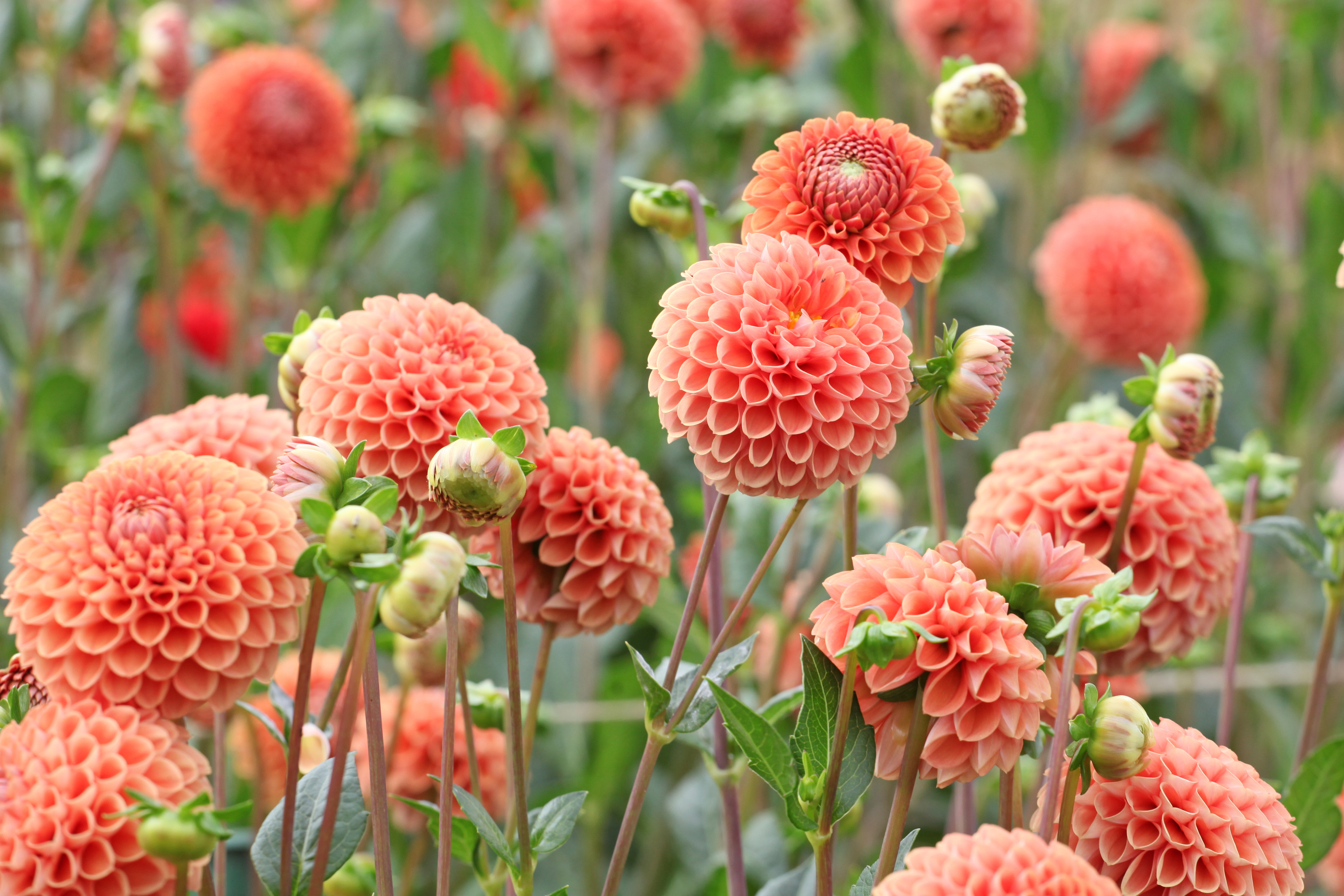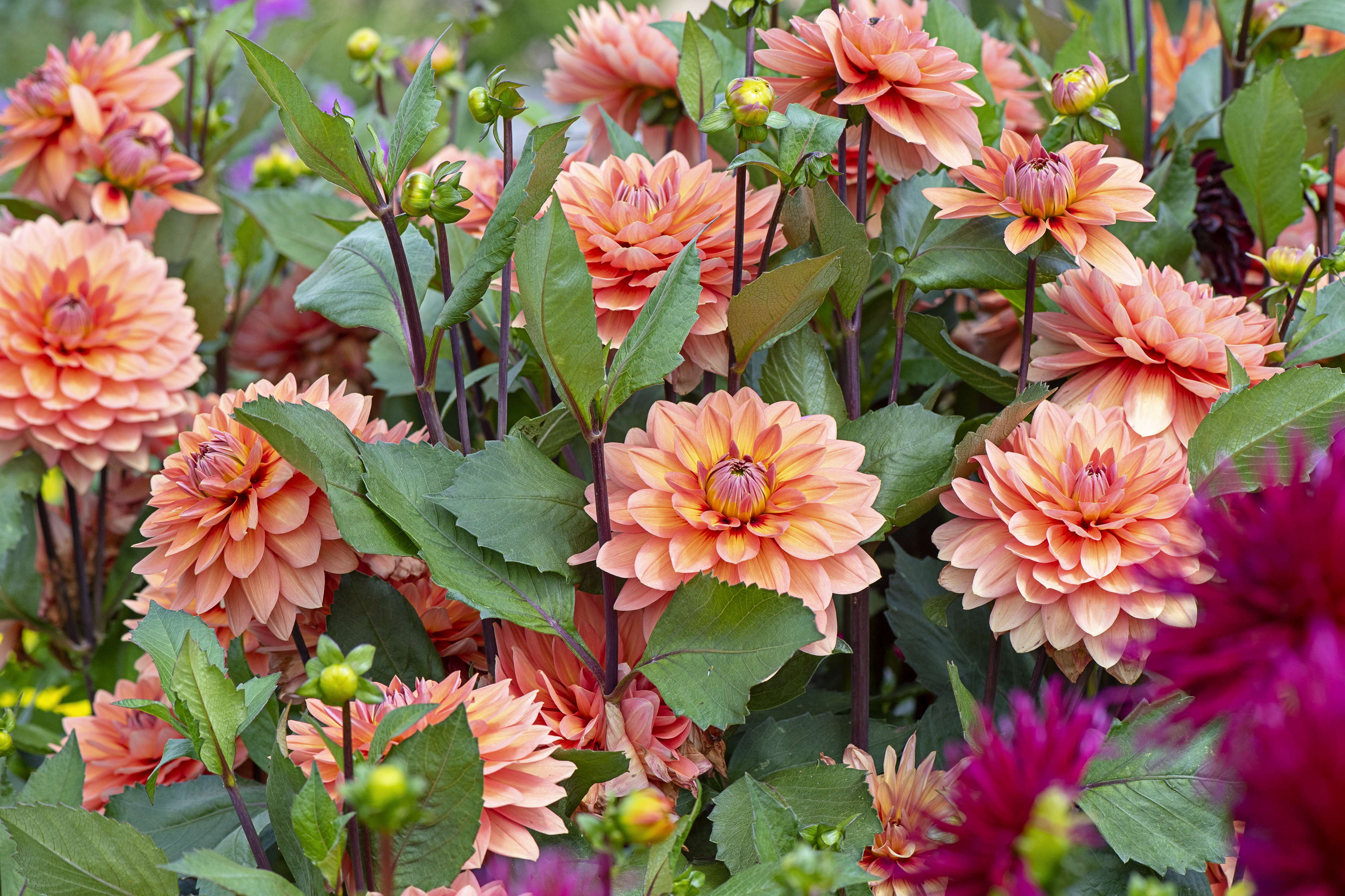
Full florets, vibrant hues, sturdy stems, dahlias are multifaceted in the visual appeal they bring to a home garden. Plus the fact that you can plant them in raised beds, chic containers, or even right into the ground, makes them incredibly versatile.
If you're ahead of the curve and already happen to be a proud dahlia plant parent, they're likely coming to full fall bloom right now. And while you do have time to take in the prolific floral views, it's also important to gather some tips on preserving your dahlias through the chilly months to come
In the case of dahlia care, overwintering your flowers might be a job you need to do, depending on what hardiness zone you're in. In colder hardiness zones (zones 7 and lower in general), you're likely to have to bring dahlias indoors if you want them to persist in your garden next year.
Luckily for us, we have some expert advice from a seasoned gardener to help us learn how to carry out this garden chore like a pro.
How to Overwinter Dahlias

In conversation with Tony O'Neill, he tells us that the bloom knowledge attached to these gorgeous flowers doesn't end with simply knowing how to grow dahlias. So he has offered up his step-by-step guide to overwintering dahlias so you can properly maintain your crops through the cold.
Step 1 - Dig Up the Tubers: After the first frost blackens the foliage, Tony tells us that the first step is to carefully dig up the dahlia tubers using a garden fork — try this one from Amazon. While doing so, he urges gardeners to be gentle to avoid damaging the tubers.
Step 2 - Remove Excess Soil: "Then, gently shake off any excess soil around the tubers and inspect them for any signs of rot or damage," he says. "Clean them lightly but don't wash them with water."
Step 3 - Dry the Tubers: Next, he tells us to allow the tubers to air dry in a cool, shaded, and dry spot for a few days. He finds that this helps prevent rotting during storage.
Step 4 - Cut Back Foliage: Once the tubers are dry, he suggests cutting back the remaining stems to about two to four inches.
Step 5 - Prepare for Storage: Finally, he recommends packing the tubers in a breathable medium. "I like to store them in a cool, dark place like a basement or garage," he notes. "Ideally at temperatures between 40-50°F (4-10°C)."
Tony's pro tip to successfully overwintering dahlias is to check on the tubers every few weeks for any signs of rot or dehydration. If you do happen upon the wintry consequence of dried-out tubers, he recommends misting the storage medium lightly to restore any lost moisture.
Should You Split Dahlia Tubers Before Overwintering

"Yes, you can split dahlia tubers before overwintering," notes Tony. "However, it's not always necessary."
He points out that if your tubers are large and have visible “eyes,” you can split them to encourage better growth in the next season. He finds that it's best to split the tubers with a clean knife ensuring each division has at least one “eye,” which will produce a new stem. A hori hori knife, like this from Amazon, is a good bet.
As one of the best flowers for raised gardens, dahlias are a rewarding garden addition. And with the help of this simple process, you can then use these fresh tubers to extend your dahlia garden in the following planting season.
How to Overwinter Potted Dahlias

When it comes to overwintering potted dahlias, Tony tells us that there are two options to protect your container gardening set-up.
Option 1 - Leave Them in the Pot: If you prefer leaving the tubers in the pot, he recommends cutting back the foliage after the first frost. "Then move the pot to a dry, cool, frost-free location," he says. "And don't forget to stop watering until spring."
Option 2 - Lift the Tubers: Alternatively, he tells us that you can dig up the tubers from the pot following the same steps as ground-rooted dahlias. While doing so, be sure to exercise caution while de-potting the tubers, so as not to harm the plant.
Dahlias are such stunning flowers, and they offer an expansive focal foliage feature. But as you can tell, growing these fall-blooming perennials doesn't end with general maintenance.
They require seasonally-aligned care routines to make sure that they remain spritely year-round. And while this may seem like a time-consuming task, the rewards far outweigh the efforts.
As planting season comes back around, not only will you have plenty of tubers to plant but soon after, you'll also have a vista of dahlias adorning your yard - and no regrets at all.
FAQs
Should I cut back dahlias before overwintering?

Lisa Wark, director at Champion Distinctive Landscaping, tells us that dahlias should be cut back after the first fall frost when the foliage dies. "Prune stems to six to eight inches to prevent wind damage," she advises. "This also makes it convenient for easier digging and storing."
How to Store Dahlia Tubers For Planting?
When it comes to safely storing dahlia tubers over winter for spring planting, Tony tells us that the trick is to contain them in a breathable medium like peat moss, sand, or sawdust.
He recommends placing them in a cool, dark area where temperatures stay between 40-50°F (4-10°C). "It's important that the storage area is frost-free," he notes. "But also cool enough to keep the tubers dormant until spring."
Price: $18
Volume: 5-Gallon Tuber
This Leonardo Dahlia Tuber from Amazon offers gardeners an easy way to bring some blush pink florets into their yard.







